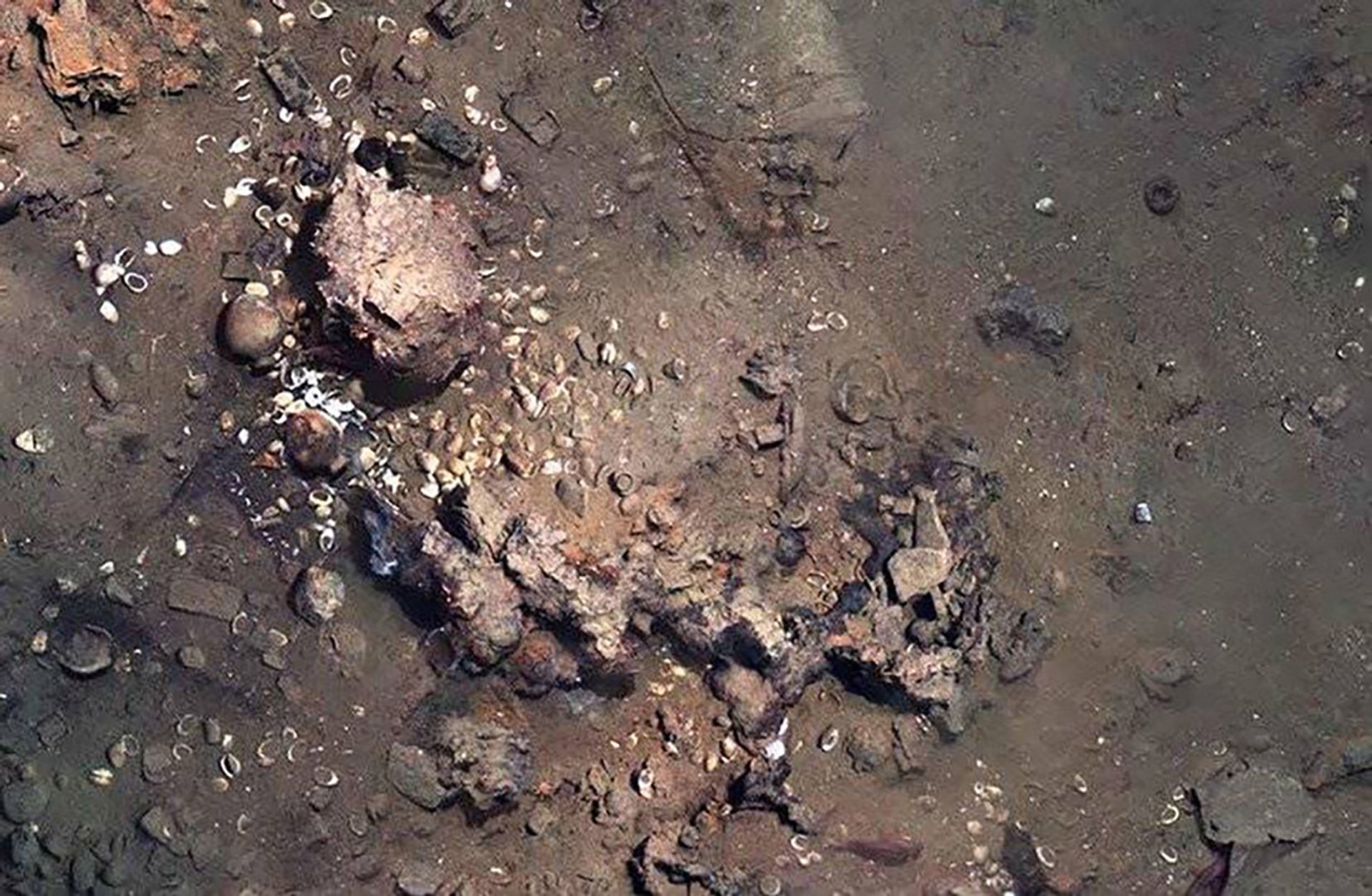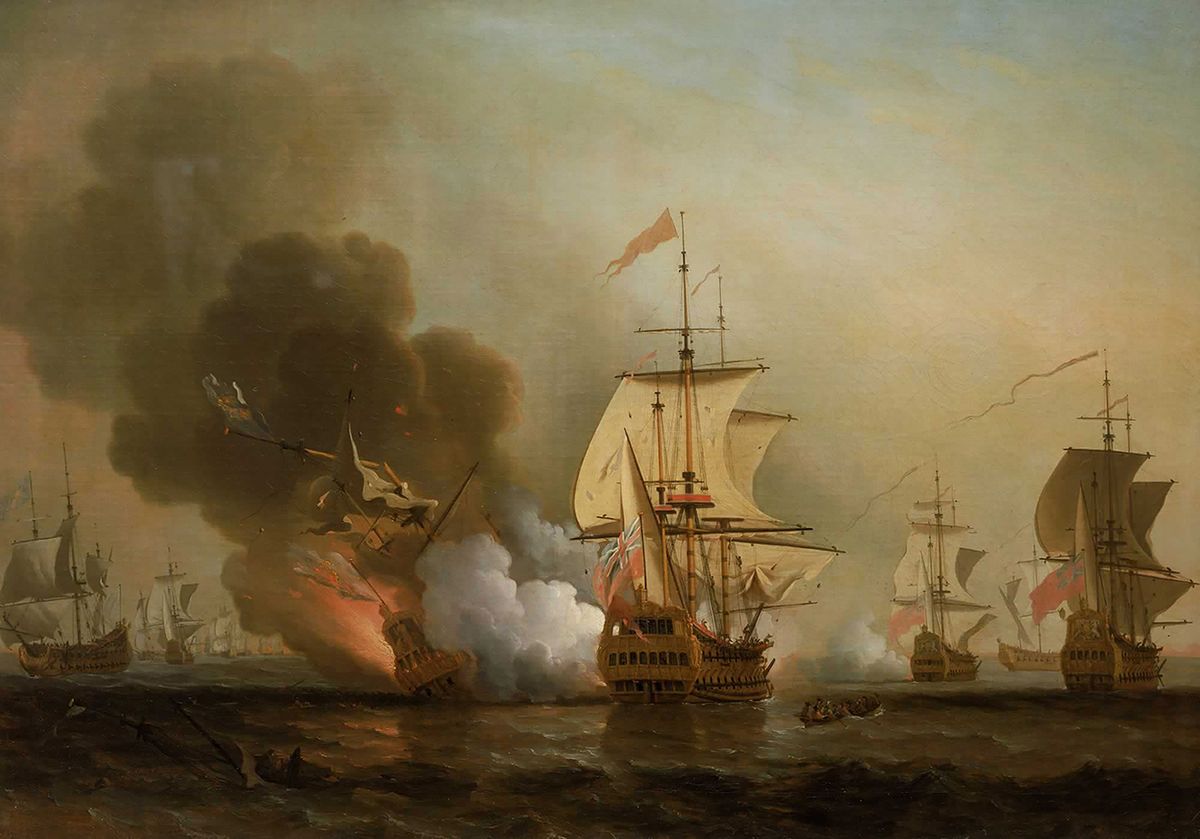The San José—a Spanish galleon that sank off the coast of Colombia in 1708 carrying gold, silver and emeralds—may finally see the light of day after 40 years of international squabbling over the right to recover the shipwreck’s valuable contents. The Colombian president Gustavo Petro wants to surface the ship before his term ends in 2026, while Spain seeks ownership of the galleon as part of its cultural heritage and a US-based company is demanding its share for “discovering” the wreck in the first place. At the same time, at least one local Indigenous group would like part of the ship’s haul to be used towards reparations, as it was their ancestors who were forced to mine the precious metals in the first place. All the while, underwater archaeologists around the world fear that attempting to remove the ship from its resting place of more than 300 years could destroy it and the history it contains.
The San José was sunk during a battle with the British during the War of the Spanish Succession. The ship made headlines in December 2015, when Colombia announced that the galleon had been found in the Caribbean Sea near Cartagena. But the discovery of the San José was not news in the world of marine archaeology and treasure hunting; a salvage company already claimed to have discovered its location in the early 1980s, setting off an ongoing series of legal battles over recovery rights.

Underwater remains from the San José galleon
The value of the precious gems and metals on the galleon is hard to quantify, because there is no record detailing what was on the ship when it went under. Nevertheless, Sea Search Armada—a US-based investment group that now owns the salvage company responsible for kicking off this saga—has put its value at $17bn (a number that many underwater archaeologists scoff at) and claims that it is entitled to half of the money, as the salvage company had revealed the ship’s location to the Colombian government in the first place. A 96-page report submitted by Colombia to the United Nations Commission on International Trade Law last year states that the San José is “the biggest treasure in the history of humanity”.
“The San José is the premier colonial-period shipwreck,” says James Sinclair, a Virginia-based underwater archaeologist and shipwreck hunter, who recently worked on the Spanish galleon Nuestra Señora de las Maravillas—a project financed by the self-described scuba-diving philanthropist and underwater explorer Carl Allen, who opened a museum in the Bahamas to show off his finds in 2022. (Petro has also expressed interest in opening a museum for his surfaced shipwreck.) “If you are only considering the value of the treasure, you have missed the big picture,” Sinclair tells The Art Newspaper. “The bigger the treasure, the bigger the trouble. And there are a lot of people who want their hands on it.”
How much is history worth?
The San José lies more than 2,000ft below the surface (some reports say up to 3,100ft). At that depth, the ship is inaccessible to human exploration. The Colombian navy used a remotely operated underwater vehicle to examine the wreck in 2015 and has kept its precise location a secret ever since, presumably because it is unable to raise the ship on its own and afraid of booty-seeking pirates. But Petro, who came to power in 2022, wants to recover the treasure and is looking to commercial salvage companies for bids on the shipwreck. Because of the cost of such an endeavour, these businesses are likely to be based in the US or Europe—perhaps even oil companies familiar with deep-water projects. (Sinclair says he heard that a group in Zürich has already submitted a plan to Petro to surface the San José.) But for many historians, archaeologists, researchers and marine scientists, raising the ship is the wrong move.
If it is just about going after the gold, what will be lost is the ability to study the sitePiotr Bojakowski, archaeologist
“Treasure makes a good headline, but it kills archaeology,” says Piotr Bojakowski, a professor in Texas A&M University’s lauded nautical archaeology department. “If it is just about going after the gold, what will be lost is the ability to study the site.”
The estimated value of the ship’s contents is so dazzling that another important factor is overlooked. “No one discusses how much it is going to cost to recover the San José,” Bojakowski says, which he estimates at hundreds of thousands of dollars per day just for a ship and equipment to surface the galleon. Furthermore, the San José could be completely destroyed in the process, so there would be nothing left to study. This is a concern that has been echoed by marine archaeologists in Colombia.

Items from the San José, more than 2,000ft below the Caribbean Sea’s surface
A letter sent in November 2023 to Juan David Correa, the Colombian minister of culture, by a group of noted academics and archaeologists from several Colombian universities called for the ship’s recovery to be solely a scientific project, and not exploited for short-term financial gain. (After all, with 570 people having perished on the San José when it sank, it is also a gravesite.) An urgent follow-up letter dated 12 December was signed by more than 20 of Colombia’s top archaeologists and scientists. One of the signatories, Juan Guillermo Martín Rincón—a professor and director of the archaeology museum at Universidad del Norte in Barranquilla—says that the letters were necessary because of the government’s “insistence on advancing an intervention in the shipwreck without having a research project, nor a conservation laboratory that guarantees the integrity of the artefacts that are intended to be extracted”. In addition, he says the navy team that Petro wants to employ has neither the training nor the experience for such an archaeological project.
Martín Rincón also notes that, last year, Petro said he would be willing to give part of the cargo from the San José to the Qhara Qhara, a Bolivian Indigenous group who claim that the ship’s valuable haul comes from their ancestral territory. Of course, it is a good idea to return this treasure to the people who were exploited by colonisers to unearth it from their own land, but the salvagers who ultimately help raise the San José will also want their share, not to mention that the items onboard—precious metals submerged under tons of salt water for hundreds of years—are not exactly something that can be instantly deposited in a bank.
Unesco gets a call
Most shipwrecks involving gold and silver have been accompanied by legal battles or claims to be the richest haul ever. In 2012, a US-owned salvage company had to turn over its find of an estimated $500m worth of gold and silver coins taken from the Nuestra Señora de las Mercedes shipwreck to Spain after five years in court. In 2019, Spain’s ministry of culture produced an inventory of 681 shipwrecks to which the country lays claim, all of which sank near the Americas between 1492 and 1898.
As a military vessel, the San José is considered Spanish property under the terms of Unesco’s 2001 Convention on the Protection of the Underwater Cultural Heritage. The convention provides a common framework for countries seeking to identify and protect their heritage, as threats facing underwater sites include climate change as well as treasure hunters. Colombia, however, never signed the 2001 convention. And, as the San José is located in Colombian waters, the country considers the ship part of its patrimony—even though most of the goods aboard came from Peru, Bolivia and elsewhere.
Instead of relying on Unesco, Colombia already had its own regulations regarding underwater heritage. In 2013, the country came up with an additional Submerged Cultural Heritage Law, undermining its earlier restrictions on treasure hunters and setting the stage for the legal commercial recovery of the San José.
“If the study of the San José wreck is entrusted to experienced archaeologists, I don’t see any risk in such an operation,” says Michel L’Hour, a noted French underwater archaeologist experienced with robotics and a former member of the Scientific and Technical Advisory Body of Unesco’s 2001 convention. “The first thing to remember is that the interest of an archaeological or historical wreck absolutely does not lie in its current market value. Whether the ship transported silver ingots in 1708, terracotta pottery in 1545, salt in 1312 or stones used in the second century BC for construction of a Roman temple, all these wrecks are the irreplaceable witnesses of a page in the history of humanity—and that is what makes them so interesting.”


